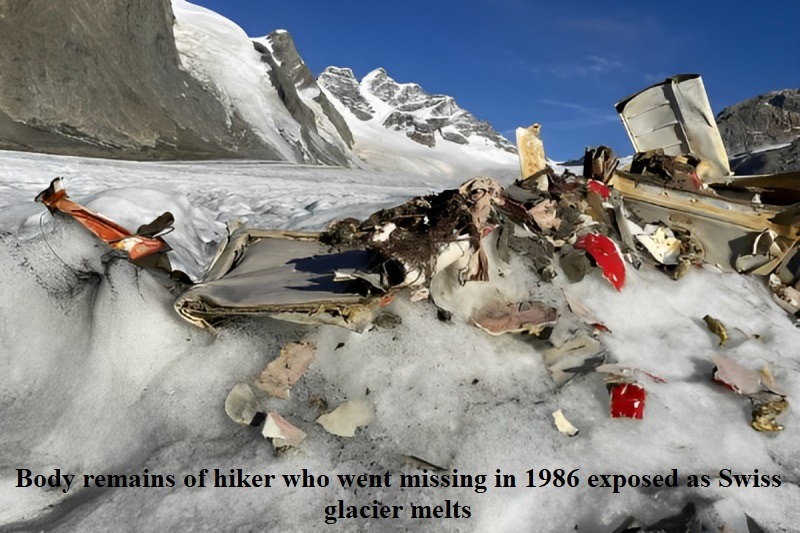
The remains of a German climber who had been missing for nearly 37 years have been discovered in a Swiss glacier.
The body became visible due to the melting ice, catching the attention of a group of climbers who happened to pass by.
A DNA test was conducted to confirm the identity of the remains, which belonged to a 38-year-old hiker from Germany who had gone missing near Switzerland’s famous Matterhorn mountain around four decades ago.
The Valais canton police stated that the DNA analysis led to the identification of the mountain climber who had been reported missing since 1986.
Back in September 1986, the German climber, then 38 years old, was reported missing after failing to return from a hike.
As a consequence of climate change causing the planet to warm up, Switzerland’s glaciers are revealing long-hidden secrets beneath the snow.
In 2015, the remains of two Japanese hikers who disappeared during a 1970 snowstorm on the Matterhorn were also recovered, and their identities were confirmed through DNA tests.
Similarly, in 2014, the remains of British climber Jonathan Conville, who had vanished on the Matterhorn in 1979, were discovered, thanks to a helicopter pilot who spotted them.
Even plane parts from a 1968 Piper Cherokee crash were found on the Aletsch glacier last year.
Switzerland boasts the highest number of glaciers in Europe, with around 1,400 glaciers, accounting for about half of all European Alps glaciers.
Last year, Swiss glaciers experienced an alarming record melting, losing over 6 per cent of their volume, a level previously considered extreme by experts at the Swiss Academy of Sciences.
Further research indicates that since the early 1930s, the country’s glaciers have lost over half of their total volume, far exceeding scientists’ predictions for their rate of shrinkage. If this trend persists, nearly all Alpine glaciers could vanish by the end of this century.
Daniel Farinotti, a co-author of the study, emphasized the importance of closely observing and quantifying the historical dimensions of glacier retreat, as it allows us to understand the glaciers’ responses to a changing climate.

Post Your Comments